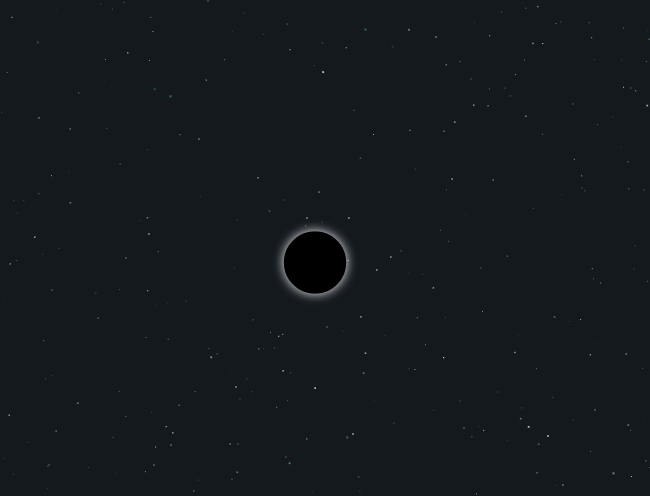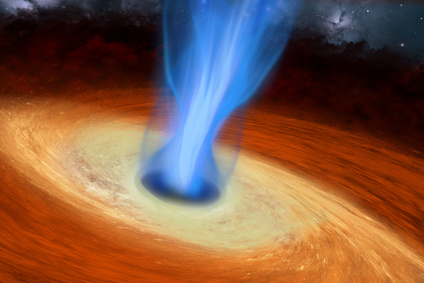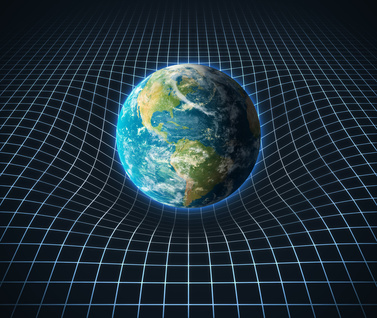Black Holes
In this tutorial, you will learn about:
- Formation of Black Holes
- Types of Black Holes
- Identifying a Black Hole
- Event Horizon
- Black holes and Relativity
Black Hole
A star, regardless of its size, is being subjected to two forces throughout its normal existence: an outward force caused by fusion process, in which hydrogen turns into helium while producing heat and light; an inward force due to gravitational pull.
Since these two forces are in balance, the star in question remains in equilibrium. When the star runs out of its 'fuel', hydrogen, however, things change: the equilibrium breaks down; the force of gravity dominates over the outward force, resulting in a net-force inwards.
This is the beginning of the death of a star, which can go on for millions of years, depending on the relative size of the star.
The first sign of a star running out of hydrogen to produce heat is its sheer increase in size; it becomes a red giant. In the next phase, it starts collapsing inwards and then subjected to a massive explosion, a supernova.
If the star is 5 - 20 times as big as our Sun, the dying star is becoming a very dense object in space-time. The centre of mass of this object is called singularity. The gravitational pull of this object is so big nothing in its vicinity can escape from it. It is called a Black Hole.
Types of Black Holes
There are three types of black holes:
- Stellar Black Holes - formed by dying large star
- Super Massive Black Holes - million or billion times heavy as a star, lying at the centre of a galaxy.
- Intermediate Black Holes - formed by colliding stars in a cluster

Identifying Black Holes
Since even light can't escape from a black hole, it creates a problem for astronomers when it comes to observing. So, they rely on secondary evidence to identify a black holes.

For instance, most of the stars in galaxies are binary stars - they exist in pairs, revolving around a common centre. If one of them becomes a Black Hole, the other becomes its immediate 'prey'. When it is being sucked into the black hole, it produces electromagnetic radiation - X-RAYS - in the form of powerful jets, which can be detected from the Earth. The first Black Hole detected in this way was Cygnus X-1, in 1971.
Event Horizon
The outer perimeter of a Black Hole is called the event horizon; nothing that goes past event horizon can ever escape from the gravitational pull of the Black Hole; it just becomes a part of ever increasing mass of the latter.
Black Holes and Relativity
The General Theory of Relativity predicts that the space-time 'grid' is warped by the presence of celestial objects in it; the greater the mass, the greater the curvature.
So, the space-time grid around our Earth and the Moon and of course, the Sun is distorted by the objects present at its centre. So, this theory discards the objects being attracted by gravity to these objects, as postulated by Newton. Instead, the General Theory of Relativity says objects are falling along the space-time curve towards bigger objects, rather than being attracted.

That means, even light bends while going past big celestial objects. The light from distant stars, when passing our own star, is subjected to the bending predicted by Einstein. In 1919, during a total solar eclipse, the measurements made by Sir Arthur Eddington, confirmed the values predicted by Einstein - and he became an instant celebrity in his own right and the Theory of Relativity became a true global sensation.
So, the massive mass of the Black Hole, as predicted by Einstein, warps the space-time and the behaviour of light at the event horizon confirms that - moves round the latter without escaping from it, then follows the warped space-time dimension.